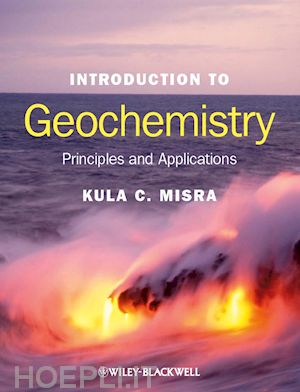BLURB NOT APPROVED BY AUTHOR. FOR INTERNAL USE ONLY. Geochemistry is a core course in all earth science degree programs.We have conducted careful research into the sort of text that is needed, looking carefully at the approach of all the competitors and analysing some 30 geochemistry course details from North American universities. Professor Bruce Yardley at Leeds University also provided valuable insight into students needs and commented on earlier drafts of the outline. The authors blurb below and the contents are the result of this research (note the full proposal is 23 pages in length, the BPS details are much condensed.)The proposed book is intended to serve as the text for an upper-level undergraduate course in geochemistry for geology majors with an introductory-level background in mineralogy, petrology, and calculus.For reasons stated in the next section, none of the geochemistry books available at present meets this need adequately. Since I started teaching our introductory course on geochemistry some 15 years ago, I havent been able to find a textbook that spans the breadth of material I cover in my course at a level I consider appropriate for geology majors. Apparently, many of my colleagues at other universities have experienced the same problem. It is my hope that the proposed book will bridge this gap. The proposed book is designed to meet what may be considered the essential requirements of a text suitable for an upper level undergraduate course in geochemistry: The strengths of the book may be summarized as follows:(a) It covers a broad rage of topics that bear on the distribution and abundance of elements (and isotopes) in geologic systems on different scales as a result of chemical and isotopic reactions (b) It develops relevant geochemical principles in a logical sequence and with an appropriate balance between qualitative reasoning and quantitative rigor. (c) The book emphasizes the practical applications of geochemical principles to geological systems on different scales. Examples of such applications discussed in the book include stability of mineral assemblages of fixed and variable compositions under specified geochemical conditions, chemical weathering, diagenesis of sediments, geothermometry and geobarometry, partial melting and crystallization of magmas; age-dating of minerals and rocks; organic matter in sediments, mass balance in the oceans, biogeochemical cycles; global warming; evolution of crust, oceans, and atmosphere through geologic time, etc.(d) It teaches how to construct and interpret phase diagrams involving different variables pressure, temperature, activity, chemical potential, fugacity, partial pressure, Eh, pH, etc as necessary to address the problem being considered.(e) It helps the students develop problem-solving techniques through worked-out examples and a challenging problem-set at the end of each chapter.











